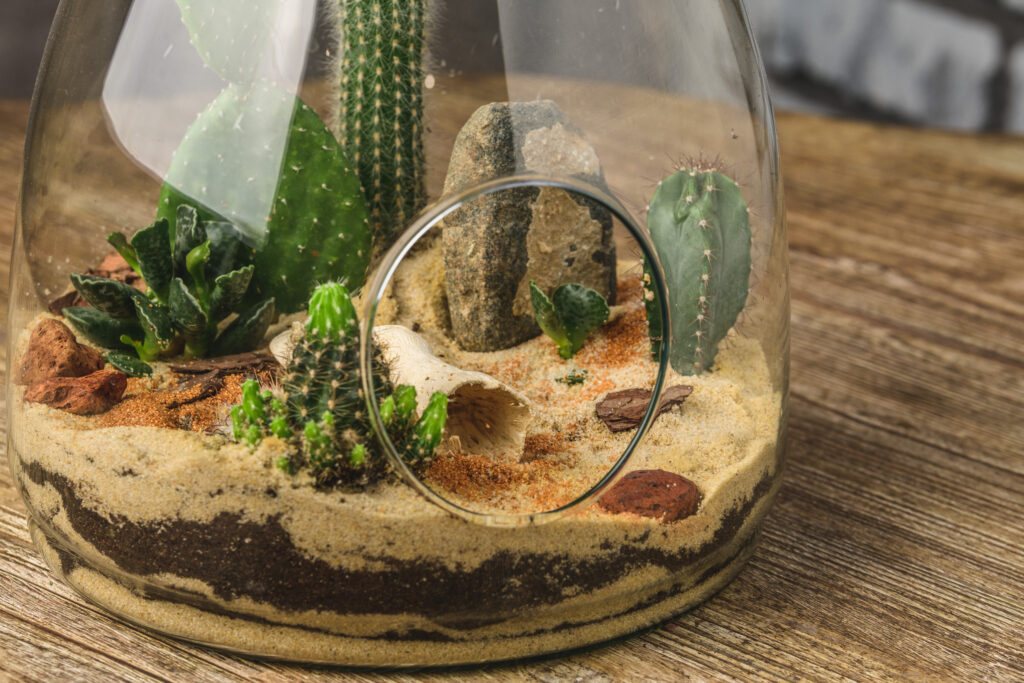Discover how to transform forgotten household objects into stunning living displays, combining sustainable decor with the joy of indoor gardening through creative terrarium design.
The Beauty of Repurposed Containers
In a world increasingly concerned with sustainability, upcycled terrariums represent the perfect marriage between zero-waste gardening and creative home decor. Forgotten glass containers that might otherwise end up in landfills can be transformed into thriving miniature ecosystems that breathe life into your living spaces while showcasing your environmental consciousness.
Household Items Perfect for Terrarium Transformation
Look around your home with fresh eyes—many items can become stunning repurposed containers for indoor gardens:
- Old fishbowls and aquariums
- Unused glass jars and food containers
- Vintage teapots and coffee pots (particularly glass ones)
- Light bulbs (carefully hollowed out)
- Glass bottles and decanters
- Unused glass kitchenware (bowls, baking dishes)
- Broken glass lamps with intact bases
Creating Your Upcycled Masterpiece: Step-by-Step Guide
1. Select and Prepare Your Container
Choose a container based on the plants you wish to grow. Clear glass works best to showcase your creation. Thoroughly clean with hot, soapy water and white vinegar to remove any residue, labels, or contaminants that could harm your plants.
2. Consider Drainage Needs
Unlike purpose-made terrarium containers, upcycled vessels rarely have drainage holes. Create a substantial drainage layer using pebbles, decorative rocks, or even recycled glass pieces to prevent root rot in your repurposed container garden.
3. Add Filtration and Soil
For closed terrariums, add activated charcoal above your drainage layer to keep the environment fresh. Then add specially formulated terrarium soil or create your own mix with potting soil, perlite, and a small amount of worm castings for nutrients.
4. Select Compatible Plants
Choose plants based on your container’s shape and opening size:
- For narrow-necked containers: Air plants, small succulents, or moss gardens
- For wide openings: Ferns, peperomia, nerve plants, and other humidity-loving specimens
- For unusually shaped containers: Consider how light will reach the plants and position accordingly
5. Add Personality Through Sustainable Decor
Enhance your zero-waste gardening approach by incorporating sustainable decorative elements:
- Beach pebbles collected from personal trips
- Fallen branches or bark from your garden
- Repurposed miniature figurines from old toys
- Natural stones, crystals, or sea glass
The Art of Zero-Waste Terrarium Maintenance
Caring for upcycled terrariums requires thoughtful adaptation to each unique container:
- Watering: Use syringes or pipettes for precise water delivery in narrow-necked vessels
- Cleaning: Create custom cleaning tools from bamboo skewers and cotton for hard-to-reach spots
- Rotation: Regularly rotate uniquely shaped containers to ensure even light exposure
- Pruning: Use long tweezers or crafted tools to maintain plants in challenging spaces
Troubleshooting Your Repurposed Container Garden
Each upcycled terrarium brings unique challenges:
- Awkward access: Create custom tools from wire and bamboo for maintenance
- Light refraction: Be mindful of how unusually shaped glass might concentrate light and potentially damage plants
- Humidity balance: Develop custom ventilation solutions for containers without proper lids
From Trash to Treasure: The Environmental Impact
By creating beautiful living displays from items that might otherwise be discarded, you’re participating in sustainable decor practices that reduce waste while bringing natural beauty into your home. Each upcycled terrarium tells a story—of creativity, environmental consciousness, and the unexpected potential hidden in everyday objects.
Transforming forgotten household items into thriving indoor gardens demonstrates that beautiful, meaningful decor doesn’t require new purchases. With creativity, patience, and a mindful approach to plant selection, even the most unusual repurposed containers can become stunning focal points that showcase both your gardening skill and commitment to zero-waste living.




